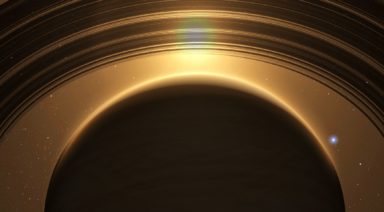NASA May Have Found Evidence of an Advanced Alien Civilization in the Cygnus Star System

KIC 8462852
Also known as Tabby’s star, has shown inexplicable fluctuations in its brightness, potentially suggesting the presence of an advanced civilization.
There’s one star that many astronomers, both amateur and professional, are focusing on right now, known as KIC 8462852, or Tabby’s star. The odd nature of this star has led some to believe that it could possibly be a sign of highly intelligent alien life in the Cygnus star system, some 1,280 light years from us. What’s so intriguing about Tabby’s star is that it has been dimming drastically over time and in dramatic fluctuations.
These fluctuations have confounded scientists who have trained a multitude of high-powered telescopes on it, including NASA’s Kepler telescope that originally discovered it. The massive dips that have been recorded in its luminosity have led some to speculate that it could be an advanced alien civilization building a Dyson sphere or swarm around the star, harvesting its energy in a process referred to as star lifting.
Tabby’s star was first discovered by an astronomer at LSU, named Tabatha Boyajian. She is now the head of the Planet Hunters project, a program that searches for exoplanets in other solar systems, especially those that could potentially harbor life. She said that initially the program would have been deemed a success if they found just one exoplanet that fell in the habitable zone, but it has since found more than 50. But the program has received the most attention due to its recent observations of KIC 8462852, which has been exhibiting a phenomenon that scientists can’t fully explain.
What’s so strange about Tabby’s Star is that astronomers have recorded drastic dips in its brightness by up to 20 percent. To put it into perspective, usually a planet orbiting a star will only generate a one percent decrease in light. And while a decrease in brightness of this magnitude is common in young stars, due to their protoplanetary disks, Tabby’s star is not young and a disk has been ruled out from infrared imaging.
Numerous theories have been proposed to define the anomalies in the data associated with Tabby’s star, but none have succeeded in fully explaining what’s going on. Even Tabby, herself, hasn’t ruled out the possibility that it could be an alien civilization. She’s even asked some friends at SETI (Search for Extraterrestrial Intelligence) to aim a radio telescope on the planet to see if they can pick up any signals being transmitted form the area.

Kepler Data for Tabby’s Star
The Dyson sphere, in its different variations, is a concept first theorized in science fiction and made popular by Freeman Dyson. It fulfills a specific criterion on the Kardshev Scale, a hypothetical measure for the level of technological advancement of a civilization. Once a civilization reaches the point that it can harness all of the energy on its planet and others in its solar system, it would supposedly move on to build a sphere around its star, in order to meet its energy needs.
Scientists believe that whatever is orbiting Tabby’s star is within the habitable zone. And while some skeptics say that the strange results are simply incorrect data or bands of asteroids orbiting the star, many of these assertions have been disproven and no theory has sufficiently explained what’s going on.
Another bizarre variable that is evident in the observations is that the light coming from the star is blocked in an asymmetrical manner. If it were a planet or other orbiting body, one would expect to see symmetry. The star also appears to show an overall dimming over time, since observations began in the early 1900s. On average, the star has been dimming by 16 percent every 100 years. This is a highly unusual rate to see a star’s luminosity diminish. This could allow for two assumptions regarding the alien hypothesis. Either they are slowly extracting energy from the star, or they are slowly building solar panels around the star, blocking more of the light that we are able to see.
One might argue that this civilization would have to be moving very quickly to build its Dyson sphere, as Tabby’s star is 1.6 times the size of our sun. Also, one would expect to see an expulsion of waste, likely in the form of radiation, if they were harvesting directly from the star. But one user in the Reddit forum that is dedicated specifically to the star, brought up science fiction novelist, Arthur C. Clarke’s, third law regarding advanced civilizations; any sufficiently advanced technology would be indistinguishable from magic. Essentially, a civilization’s technology, that is advanced to the point of harvesting energy from a star, would be incomprehensible to us.

A Dyson Swarm or Dyson Sphere
Now that our attention is piqued and we have a number of eyes and ears trained on Tabby’s star maybe we’ll be able to discover what’s really going on in the Cygnus constellation. Is it simply a natural phenomenon that will lead us to new discoveries or groundbreaking evidence of a hyper-advanced civilization? Hopefully we will soon learn more.
The Hollow Moon Theory; Is the Moon an Artificial Satellite?

The moon is often described as having divine, feminine energy – the female counterpart to our Sun. It is a source of cosmic phenomena, providing us with beautiful eclipses, changing tides, and hopefully a future staging point for missions to Mars and beyond. But when we start to look at the moon under a closer lens, a number of aberrant characteristics suggest that it might be hollow — and that there may be a secret moon base.
The Moon Rings Like a Bell
The Apollo missions and subsequent moon landings have been at the center of controversy and conspiracy for years. There has been an interminable debate as to whether we actually landed on the moon, what was found there, or to what extent NASA has been hiding information from us. But amid the quarreling and speculation, the number of anomalous features on the moon has puzzled scientists and conspiracy theorists alike.
Toward the latter end of the Apollo missions, NASA astronauts placed seismic recording devices on the lunar surface to document artificial and natural moonquakes. Their equipment recorded activity ranging from meteorite strikes to man-made explosions, and crash landings of Apollo rockets. Even the sun’s heat created seismic activity when it caused the moon to thaw on a daily basis.
The astronauts were given a series of ALSEPs, or Apollo Lunar Surface Experiment Packages to set up seismographs and initiate detonations ranging from shotgun-like charges to mortars with multiple grenades. Eventually, NASA intentionally crash-landed the Apollo 12 module as well as the S-IVB rocket setting off an explosive force equivalent to nearly 12 tons of TNT.




































